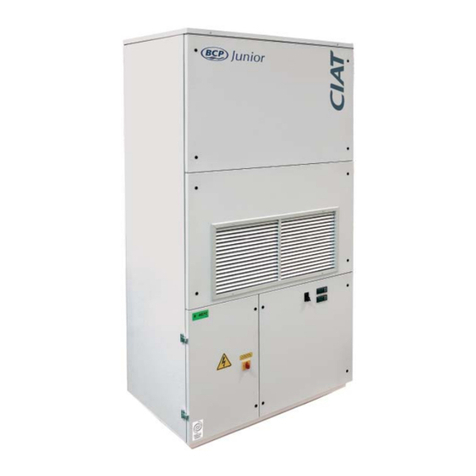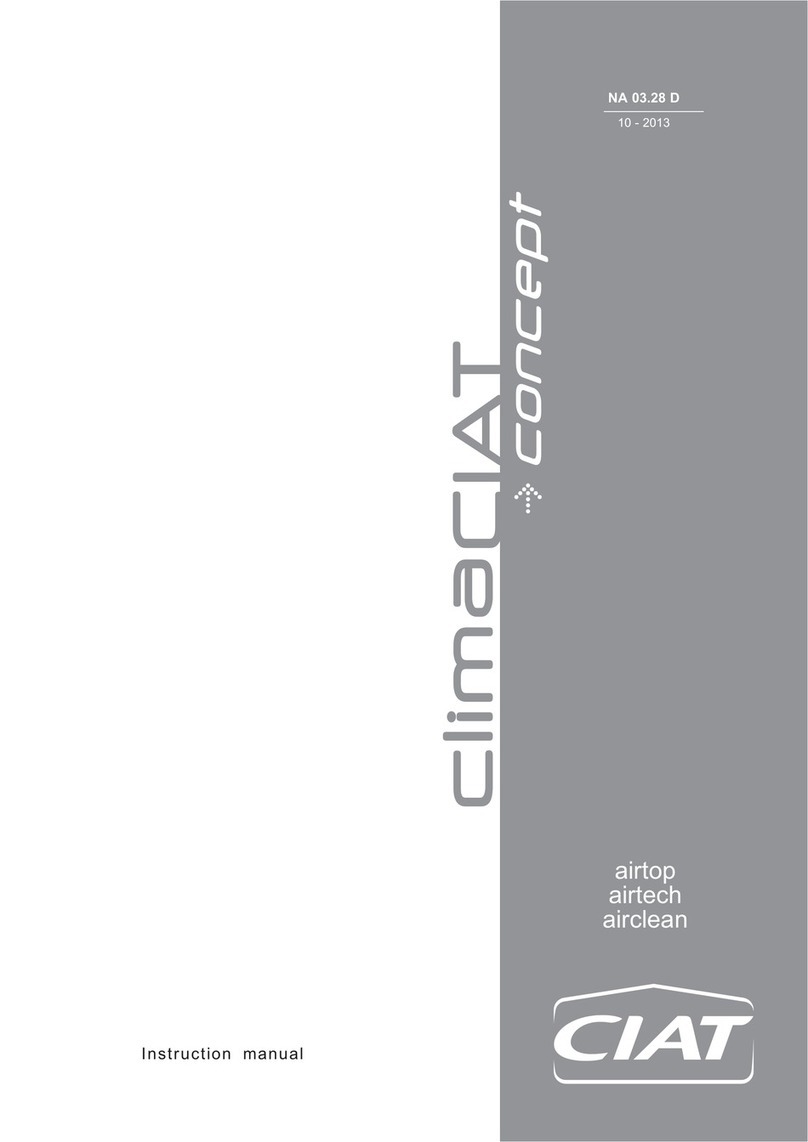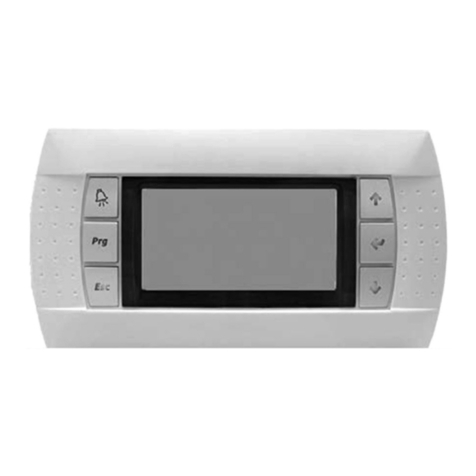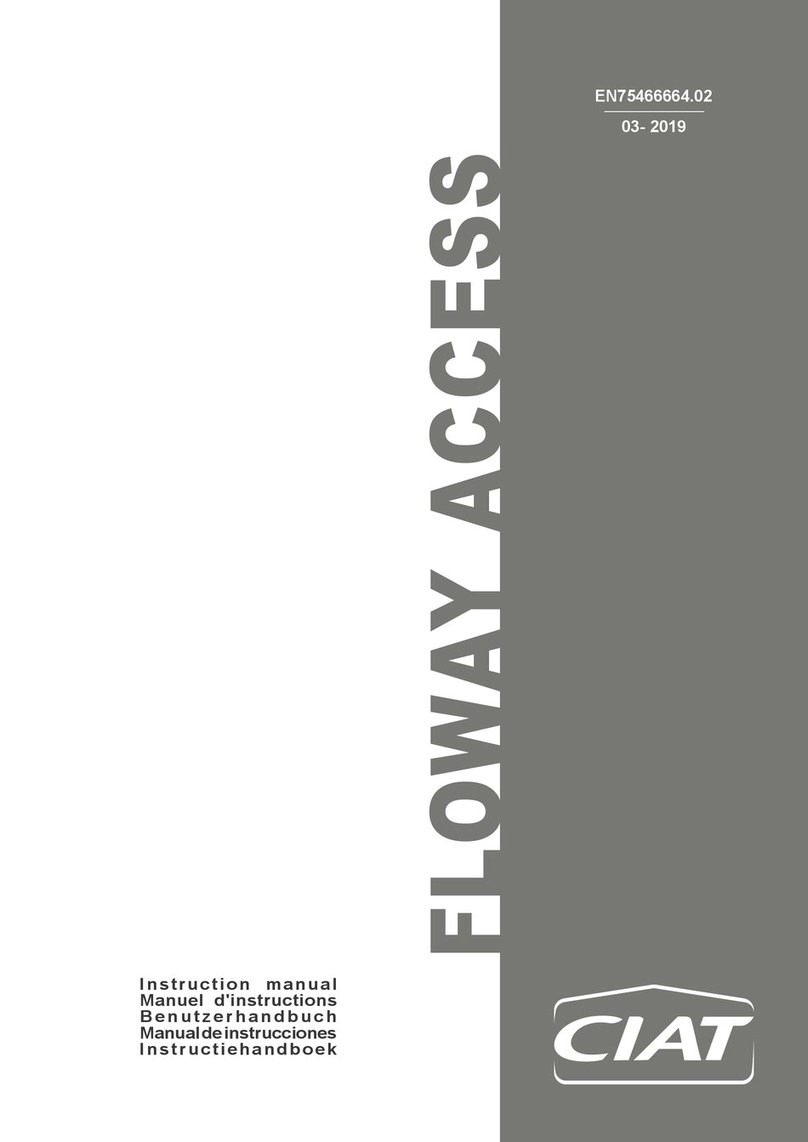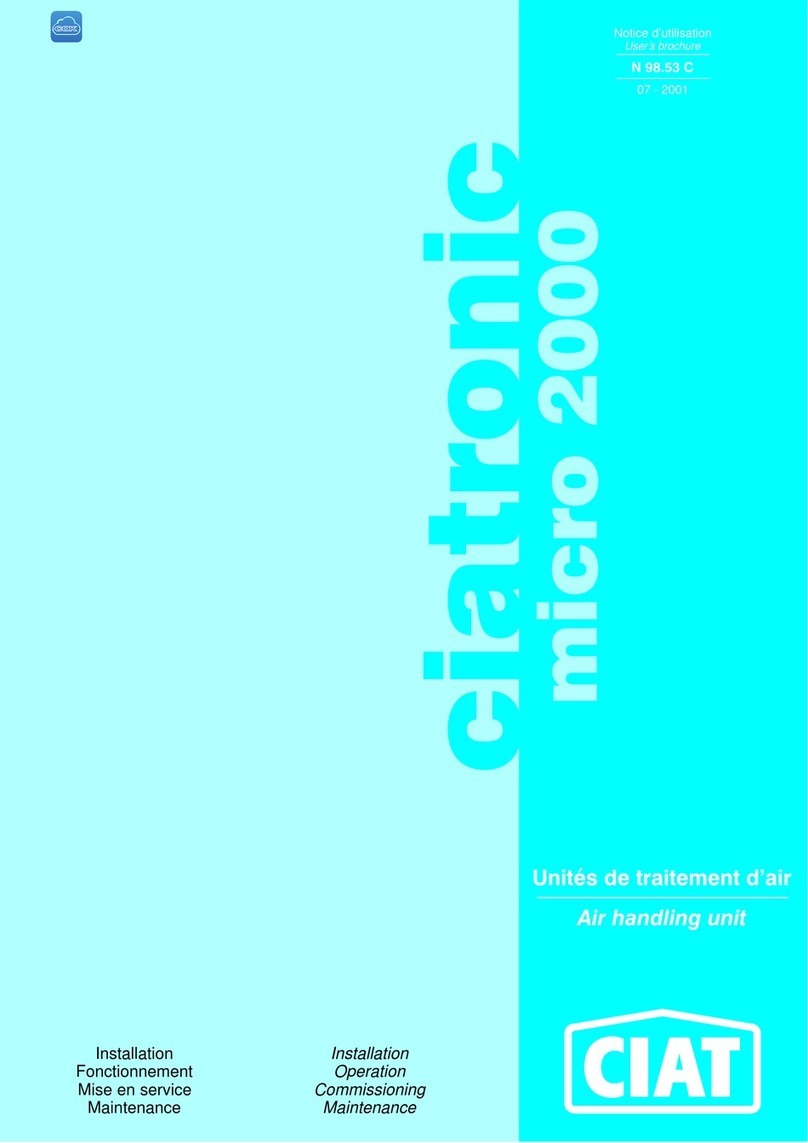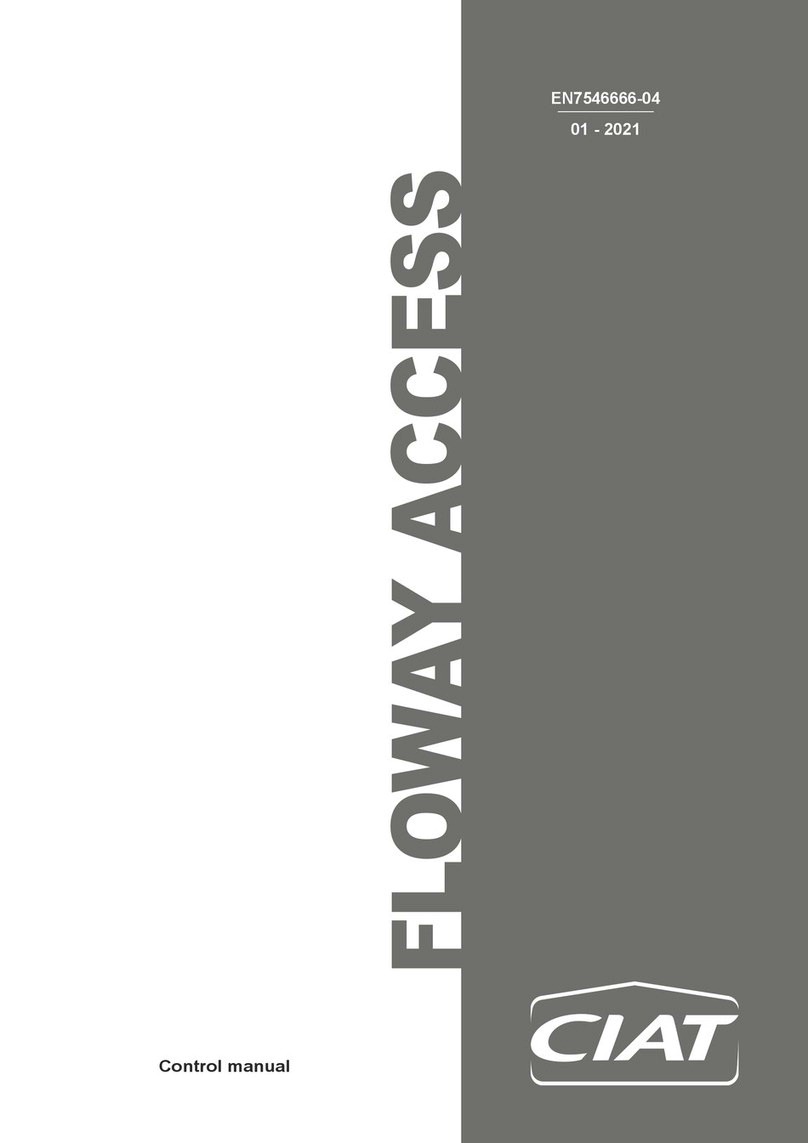Supervision and control ......................................................................................................................4
1.1 The program................................................................................................................................................... 4
1.2 The HMI terminal........................................................................................................................................... 4
1.2.1 Using the HMI terminal keys ..................................................................................................................................5
1.3 The room terminal (Option) ....................................................................................................................... 6
1.3.1 Controls.....................................................................................................................................................................6
1.3.2 Displays.....................................................................................................................................................................7
1.3.3 Room terminal information, settings and browsing.............................................................................................8
1.3.4 Managing alarms......................................................................................................................................................8
1.3.5 Electrical connections............................................................................................................................................10
1.4 The controller.............................................................................................................................................. 11
1.5 Description of the air handling units..................................................................................................... 11
1.6 Functional analysis of the control......................................................................................................... 12
1.6.1 Management of on and off modes.......................................................................................................................12
1.6.2 Safety and insulating damper...............................................................................................................................12
1.6.3 Antifreeze thermostat............................................................................................................................................12
1.6.4 Fire fault...................................................................................................................................................................12
1.6.5 Fan motors..............................................................................................................................................................13
1.6.6 Filtration...................................................................................................................................................................13
1.6.7 Temperature control..............................................................................................................................................14
1.6.8 Plate recovery.........................................................................................................................................................17
1.6.9 Electric heater.........................................................................................................................................................17
1.6.10 Free cooling........................................................................................................................................................18
1.6.11 Humidifier............................................................................................................................................................18
1.6.12 CO2air quality.....................................................................................................................................................18
1.6.13 Night cooling.......................................................................................................................................................19
1.6.14 The fault relays...................................................................................................................................................19
1.7 Controller inputs and outputs................................................................................................................. 20
1.7.1 Analogue inputs .....................................................................................................................................................20
1.7.2 Digital inputs ...........................................................................................................................................................20
1.7.3 Analogue outputs...................................................................................................................................................20
1.7.4 Digital outputs.........................................................................................................................................................20
Overview of the HMI module screens ............................................................................................22
2.1 Esc button.................................................................................................................................................... 22
2.1.1 Access level selection menu................................................................................................................................23
2.2 Setpoint menu............................................................................................................................................. 23
2.3 Machine parameters menu....................................................................................................................... 25
2.4 Adjustment parameters menu................................................................................................................. 28
2.5 Read-only parameters menu................................................................................................................... 31
2.5.1 Inputs.......................................................................................................................................................................31
2.5.2 Outputs....................................................................................................................................................................32
2.5.3 Calculated setpoints..............................................................................................................................................33
2.5.4 Counters..................................................................................................................................................................33
2.6 Fault memory menu................................................................................................................................... 34


















